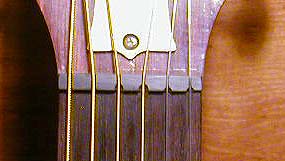Serge the thinking behind compensation at the nut is similar to the reasoning for compensation of the saddle. I can't give you the entire skinny on the idea, but the basics is that the compensation at the saddle is not entirly accurate enough and over time, folks have come up with a couple of methods for compensating the nut to acceive a better intonated instrument.
Here is one article on nut compensation.
there are several discussions in the MIMF liabrary on compensated nuts, I just wanted to get some other opinions from those here at the OLF.
And if you could make that ASAP, PDQ, that would be OK.




